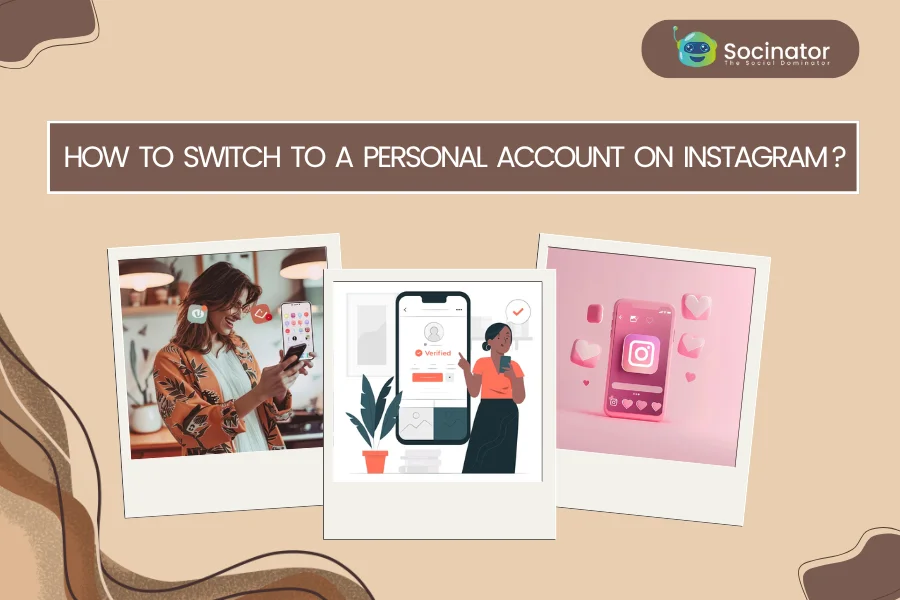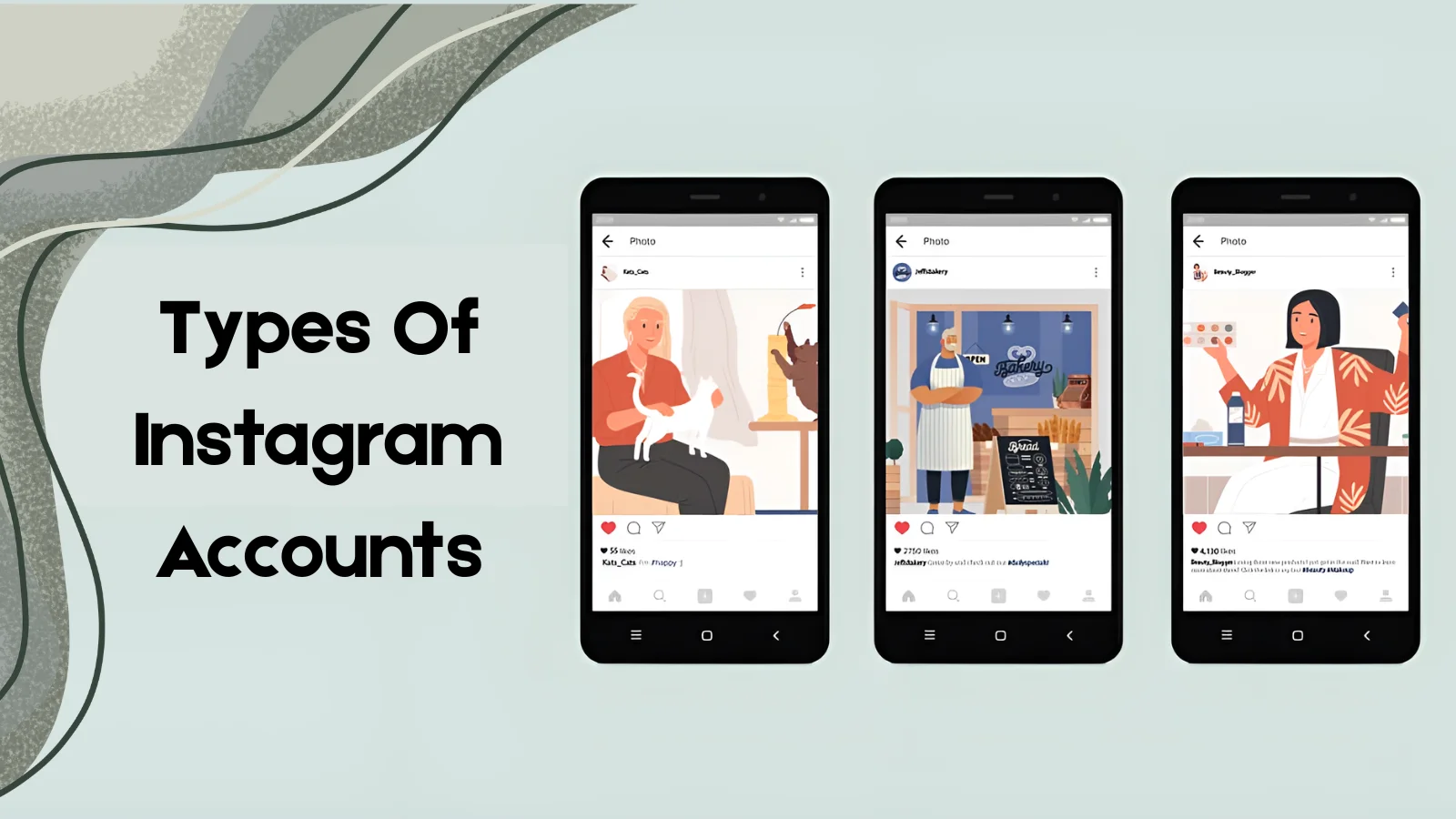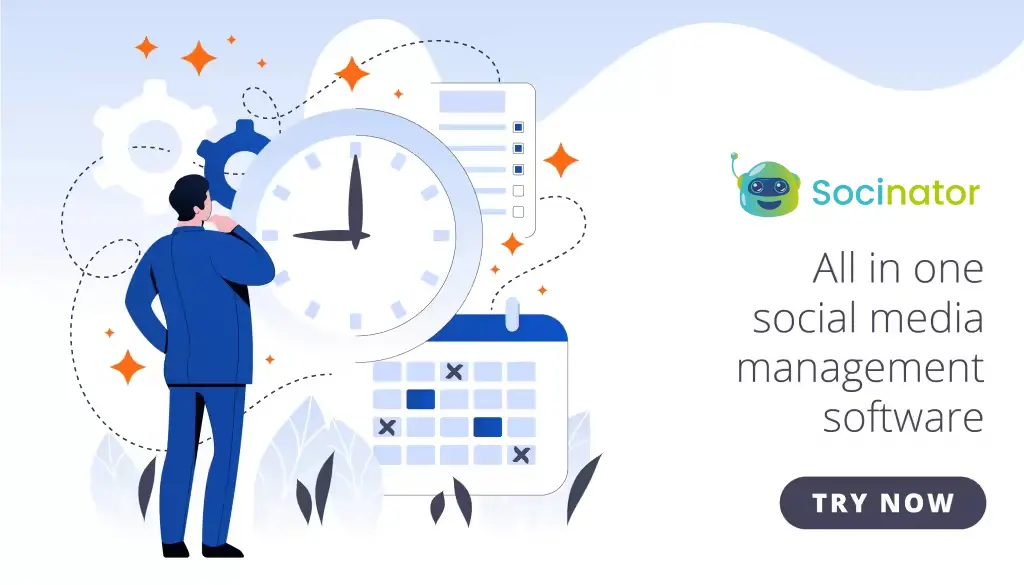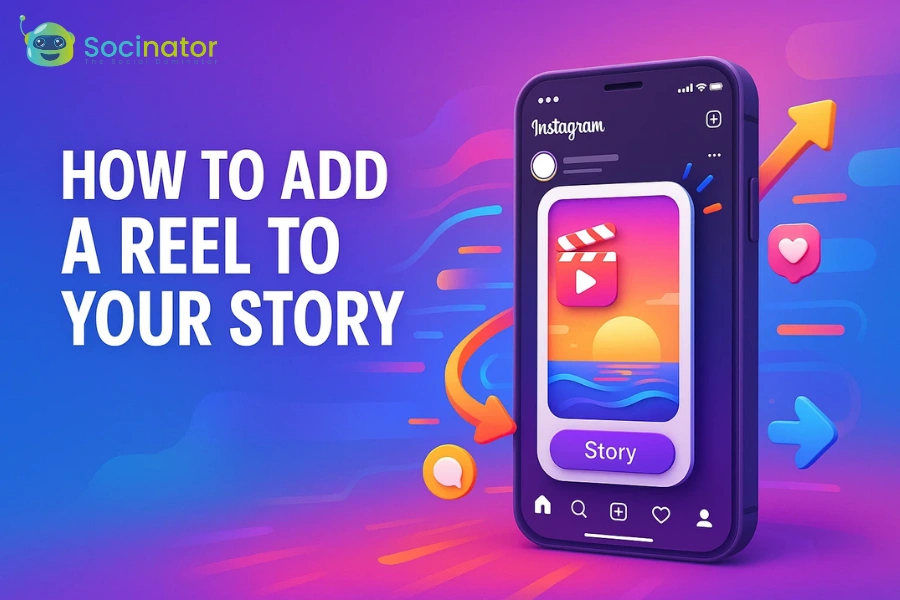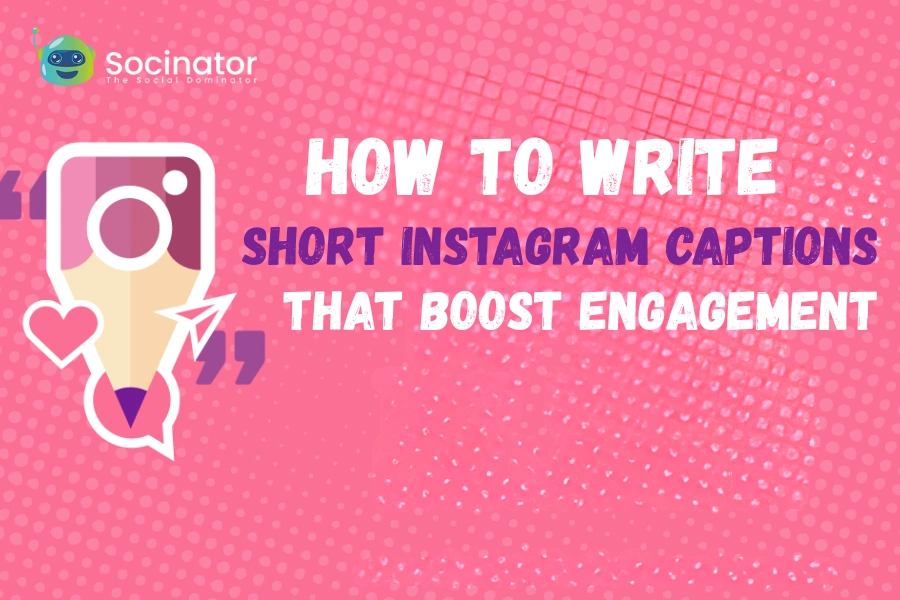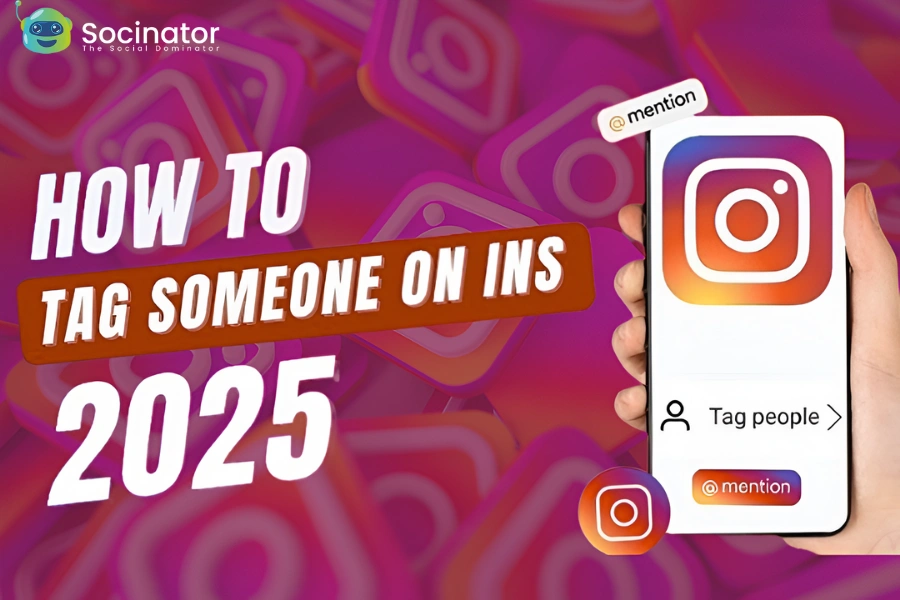Instagram offers various account types tailored to different user needs. Whether you’re a creator, influencer, business, or just someone who wants a simple social experience, Instagram gives you the flexibility to switch between account types. However, not everyone wants or needs the added features of a business or creator account. Many users eventually realize that a personal account suits them best. In this guide, we’ll walk you through how to switch to a personal account on Instagram, explain why you might want to do so.
In A Hurry? Listen To The Podcast Now
Why People Switch Back to Personal Accounts?
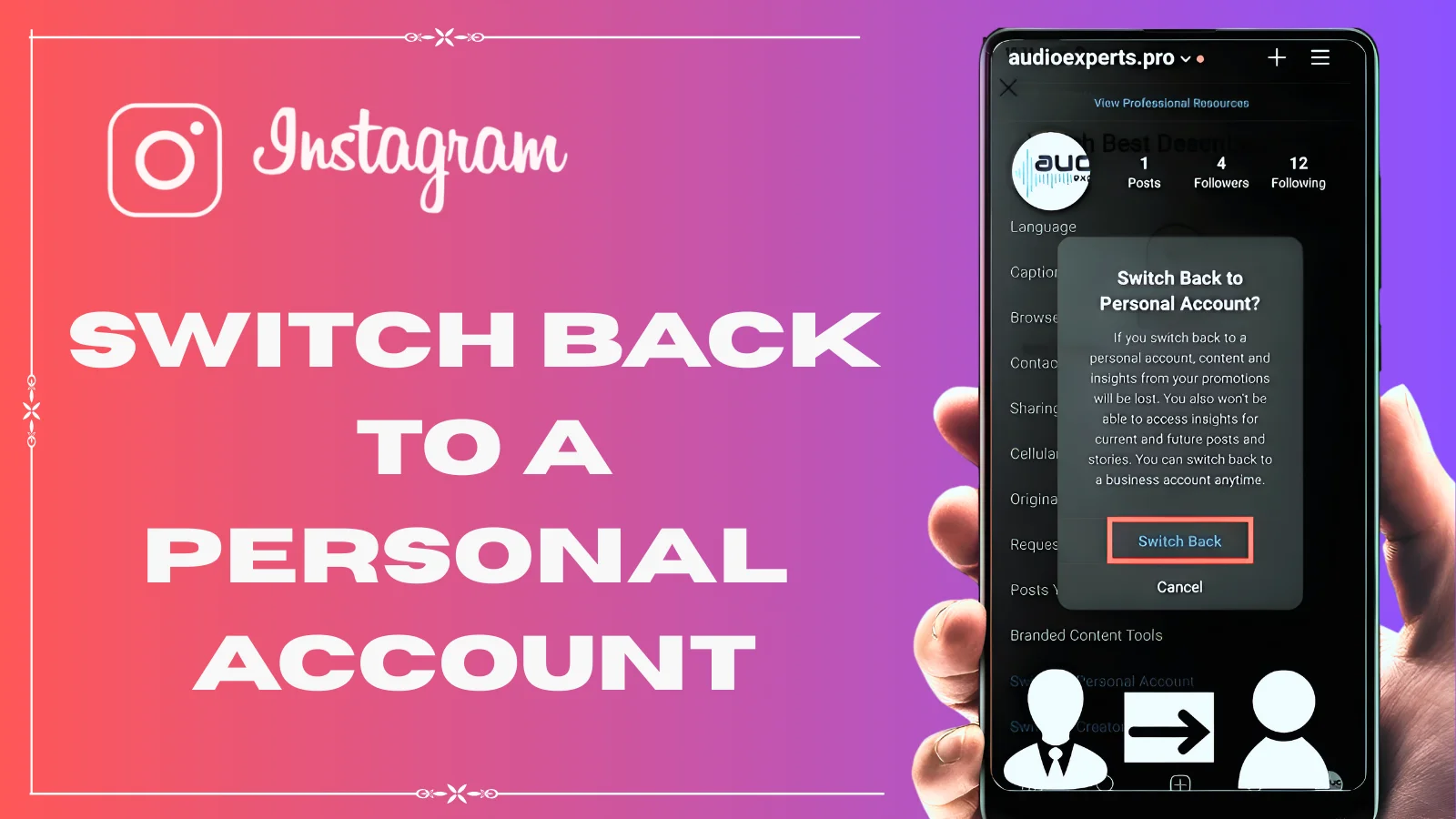 At first glance, switching to a business or creator account is the ideal choice. After all, it gives you access to analytics, promotional tools, and category tags. However, some users eventually feel the added complexity or visibility isn’t worth it. Here are a few common reasons:
At first glance, switching to a business or creator account is the ideal choice. After all, it gives you access to analytics, promotional tools, and category tags. However, some users eventually feel the added complexity or visibility isn’t worth it. Here are a few common reasons:
- Privacy Concerns: Business accounts are public by default.
- Reduced Reach: Some claim their engagement drops after switching.
- Simplified Use: Personal accounts offer a more straightforward experience.
- Desire for Organic Interaction: Less focus on metrics, more on genuine engagement.
Whatever your reason, knowing how to switch to a personal account on Instagram puts the control back in your hands. It gives you the freedom to curate your experience without the pressure of performance metrics.
Also Read:
Beginner’s Guide: How To Use Instagram?
A Complete Guide To Instagram Account Management For Creators
What Are The Types Of Instagram Accounts?
Before diving into the steps, it helps to understand the differences among the available Instagram account types, especially if you’re trying to figure out how to use Instagram in a way that aligns with your personal or professional goals.
1. Personal Instagram Account
A Personal Account is the default account type most users start with. It’s designed for casual users who want to browse, share photos and stories, follow friends, and engage with content in a relaxed and private manner. This account type allows for maximum privacy settings; you can make your account private, control who follows you, and enjoy a clutter-free interface. However, it doesn’t offer access to Instagram Insights, ad tools, or advanced contact features. That said, for those who aren’t focused on building a brand or analyzing performance metrics, a personal account provides a clean, easy-to-use experience.
2. Instagram Business Account
A Business Account, on the other hand, is ideal for brands, companies, and entrepreneurs who use Instagram as a marketing tool. It offers access to valuable features like Instagram Insights (analytics for followers and content), advertising capabilities, call-to-action buttons (e.g., Call, Email, Directions), and integrations with Facebook Business tools. Business accounts are always public and cater to users who need to monitor their growth and performance. While powerful, these features can sometimes add unnecessary complexity for users who don’t actively promote a brand.
3. Instagram Creator Account
The Creator Account is tailored for influencers, content creators, artists, and public personalities. It provides many of the business account features, like analytics and promotional tools, but also includes unique tools such as detailed follower growth data, inbox message filtering, and access to Instagram’s music library and branded content tools. Creator accounts are perfect for individuals building a personal brand, but can also feel overwhelming if you’re not leveraging those features regularly.
If you’re currently using a business or creator profile and feel it doesn’t serve your needs anymore, learning how to switch to a personal account on Instagram could be your next step toward a simpler, more private, and less cluttered social media experience. Personal accounts give you more control over your digital space and reduce the pressure of performance metrics, perfect for users looking to focus on authentic interaction rather than analytics.
Step-by-Step: How to Switch to a Personal Account on Instagram
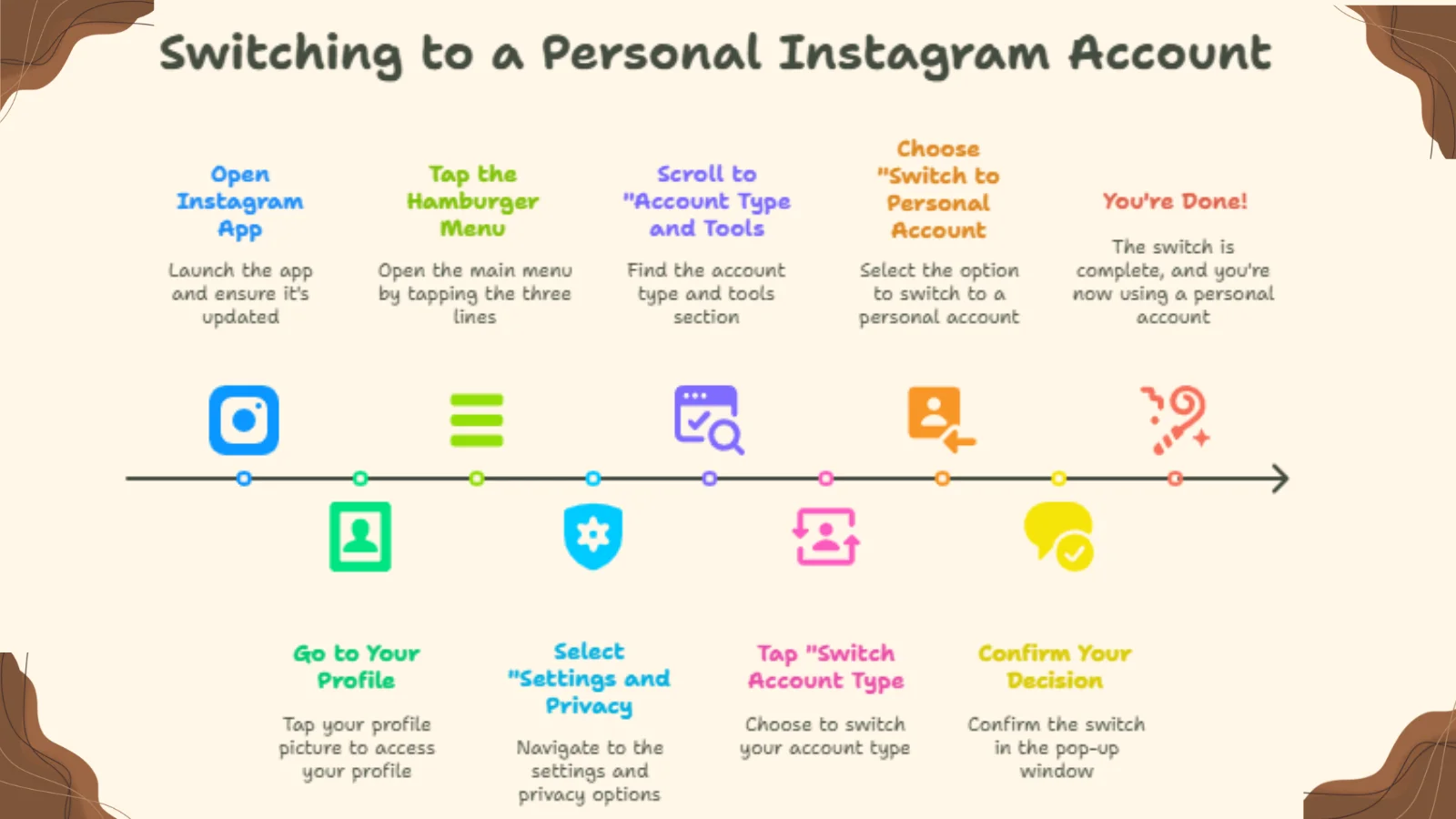 Switching to a personal account on Instagram is quick and user-friendly. Whether you’re simplifying your social presence, prioritizing privacy, or stepping away from business tools, follow these steps to make the switch effortlessly:
Switching to a personal account on Instagram is quick and user-friendly. Whether you’re simplifying your social presence, prioritizing privacy, or stepping away from business tools, follow these steps to make the switch effortlessly:
-
Open the Instagram App
Make sure you’re logged in and using the latest version of the app. Updating ensures that all features and menus are visible and functioning correctly.
-
Go to Your Profile
Tap your profile picture located in the bottom-right corner of the screen. This will take you to your personal Instagram feed and profile settings.
-
Tap the Hamburger Menu (≡)
In the top-right corner of your profile page, tap the three horizontal lines. This opens the main menu with options like “Settings,” “Archive,” “Your Activity,” and more.
-
Select “Settings and Privacy”
From the menu, tap Settings and Privacy. This is where you manage everything from account preferences to security and data controls.
-
Scroll Down to “Account Type and Tools.”
Scroll through the list until you find Account Type and Tools under the “For professionals” section. This is the area where Instagram lets you control your account’s classification.
-
Tap “Switch Account Type.”
After selecting “Account Type and Tools,” you’ll see a menu listing your current account type (either Business or Creator) along with options to switch to another type.
-
Choose “Switch to Personal Account.”
Tap on Switch to Personal Account. Instagram will notify you that by doing this, you’ll lose access to features like Insights, ads, and contact buttons.
-
Confirm Your Decision
A pop-up will appear prompting you to confirm the change. If you’re sure, proceed by confirming. Don’t worry, this action won’t delete any of your posts, followers, or saved content.
-
You’re Done!
That’s it! You’ve successfully switched to a personal account. The interface may feel slightly different, but you’ll notice a cleaner, more simplified experience without the pressure of performance metrics.
Switching back to a personal account not only reduces the digital noise but also enhances privacy and offers a more casual, relaxed Instagram experience. And remember, this change is completely reversible. So if you ever want to switch again, just follow the same steps.
Whether you’re decluttering your profile or focusing more on organic connections, knowing how to switch to a personal account on Instagram puts the control back in your hands.
What You Lose When You Switch to a Personal Account?
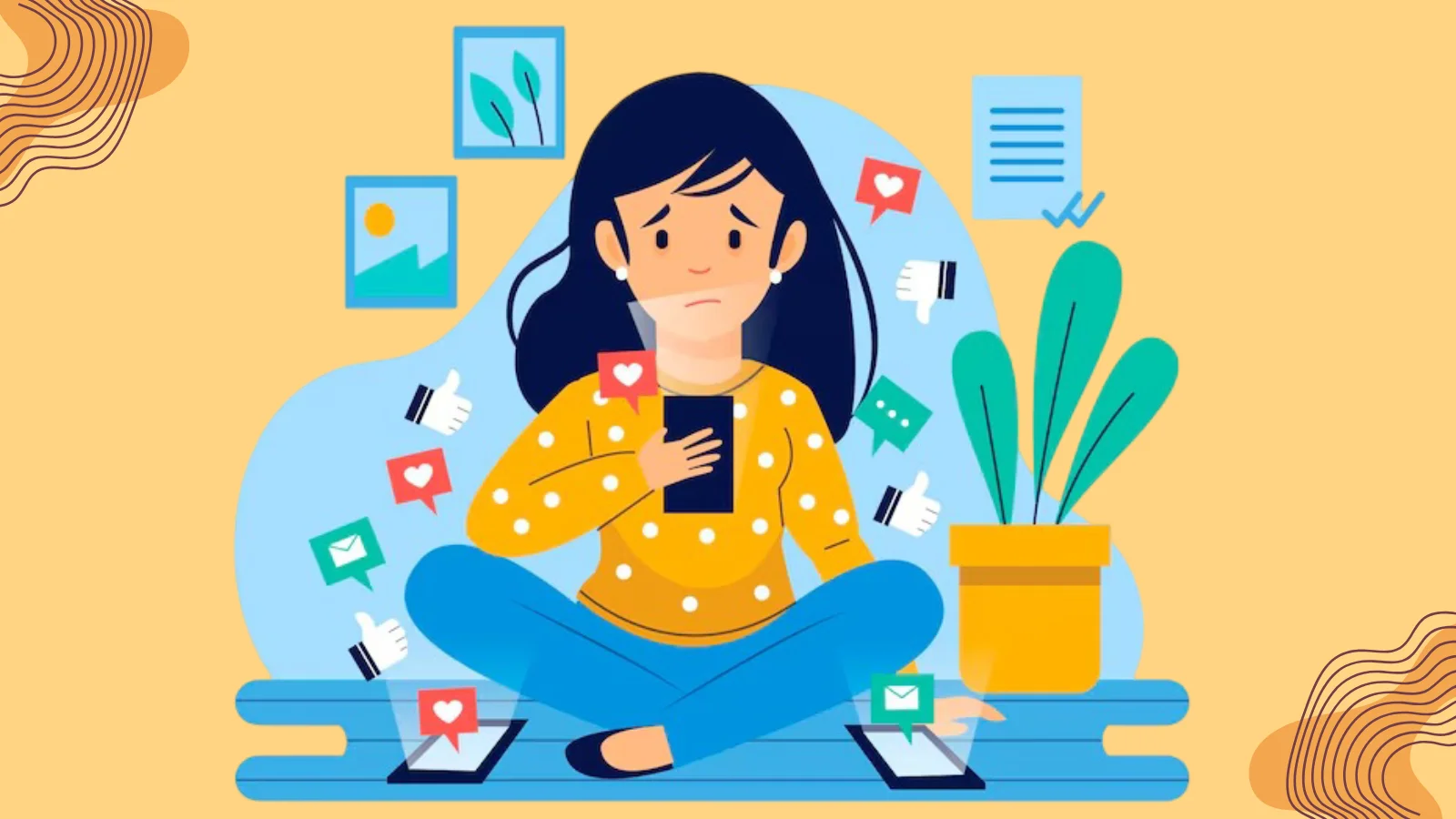 While learning how to switch to a personal account on Instagram is simple, it’s important to understand what features you’ll give up in the process.
While learning how to switch to a personal account on Instagram is simple, it’s important to understand what features you’ll give up in the process.
-
Instagram Insights
You’ll no longer have access to analytics like reach, engagement, or follower growth. Manual tracking or third-party tools become necessary.
-
Ad Creation
Personal accounts can’t boost posts or run ads via Meta Ads Manager, limiting promotional opportunities.
-
Contact Buttons
Options like “Call” or “Email” are removed, reducing direct contact methods for your audience.
-
Branded Content Tools
You lose access to paid partnership tags, which could affect influencer collaborations or sponsorship deals.
-
Shopping and Commerce Features
Instagram Shops and product tagging are unavailable, limiting sales potential directly through your posts.
-
Professional Dashboard
The dashboard for managing tools and tracking performance is no longer accessible.
If you’re using Instagram for monetization, promotions, or professional networking, these limitations might feel restrictive. But if you’re focused on organic content and simpler social media use, switching may be the right fit. Carefully weigh your goals before deciding how to switch to a personal account on Instagram.
Is It the Right Move for You?
-
For casual users
If you use Instagram mainly to share personal updates or connect with friends, switching to a personal account offers a simpler, stress-free experience.
-
For creators or businesses
If you depend on features like analytics, ads, or branded content tools, staying with a business or creator profile might be more beneficial.
-
To reduce clutter and distractions
Personal accounts have a cleaner interface with fewer metrics and notifications, making Instagram feel more relaxed and personal.
-
For better privacy
Personal accounts offer more control over who sees your content, since they can be set to private.
-
If you’re feeling overwhelmed
Tired of managing performance data or marketing tools? Switching can help you enjoy Instagram again.
-
It’s not permanent
The good news is, knowing how to switch to a personal account on Instagram means you can also switch back anytime your needs change.
Can You Switch Back Later?
Yes, Instagram lets you switch between account types anytime. If you’ve changed to a personal account but later need analytics, ad tools, or contact buttons again, you can easily revert:
- Go to Settings
- Tap “Account Type and Tools.”
- Select “Switch Account Type.”
- Choose Business or Creator Account
Whether you’re adjusting your strategy or testing features, switching back is quick and fully reversible. So if you’re wondering how to switch back to a personal account on Instagram—or move forward again, you’re always in control.
What Are the Common Issues While Switching?
 Sometimes users encounter glitches or confusion. Here are a few common issues:
Sometimes users encounter glitches or confusion. Here are a few common issues:
- No Option to Switch: You may need to update your app or check if your account is managed by Facebook’s Business Suite.
- Features Still Visible: Some business tools may temporarily stay active. They’ll be removed after refreshing the app.
- Loss of Previous Insights: Historical data is erased when switching.
Having a clear idea of how to switch to a personal account on Instagram helps you troubleshoot these problems quickly. Even after switching to a personal account, if your post engagement still feels underwhelming, don’t worry! Tools like Socinator are here to change the game. From smart scheduling to powerful automation features, it helps you stay consistent, engage better, and reach a wider audience on Instagram, without the constant manual effort.
Want to make sure your content gets the attention it deserves?
Why Socinator is the Smartest Way to Manage Your Instagram?
Switching to a personal account doesn’t mean giving up on productivity or strategic growth. With the right Instagram account management tool, like Socinator, you can continue to build your presence, connect with your audience, and automate your content effortlessly. Even without business features, Socinator helps streamline your strategy, making it easier to stay active, consistent, and intentional. Whether you’re a casual user, content creator, or a brand seeking a more authentic approach, Socinator adapts to your goals and simplifies the way you manage Instagram.
Here’s what Socinator helps you achieve, even on a personal account:
1. Plan Like a Pro, Without the Hassle
Forget the daily scramble of “what to post today?” Socinator lets you plan your entire content calendar. Schedule weeks’ worth of posts and stay consistent, even on your busiest days.
2. Grow Your Community, Naturally
Want to attract the right audience without spending hours online? It intelligently follows and unfollows users based on your preferences, helping you connect with people genuinely interested in your content or niche.
Spark Engagement While You Focus on Creating
With smart tools for auto-liking, commenting, and even sending welcome DMs, it keeps your account active and interactive. You focus on the content, and it takes care of staying social.
3. Juggle Multiple Accounts? No Problem.
Whether you’re a social media manager or just running multiple projects, Socinator keeps all your Instagram accounts under one clean dashboard, no more switching back and forth endlessly.
4. Insights That Go Beyond the Basics
Even if you’re using a personal account (where Instagram limits data), it provides deep analytics, like which posts drive the most interaction or what time your audience is most active, so you can tweak your strategy with confidence.
5. Automation That Stays in the Safe Zone
Worried about triggering Instagram’s spam filters? Don’t be. It is built to mimic natural activity and operates within platform-safe limits, ensuring your account stays compliant while growing steadily.
So, even if you’ve moved to a personal account for that clean, authentic vibe, you don’t have to sacrifice growth or consistency. With Socinator by your side, you get the best of both worlds: the freedom to be real, and the tools to stay active, relevant, and ahead of the game, without burning out.
What Can You Automate in Instagram Marketing on a Personal Account?
Absolutely, yes, it’s possible!
Switching to a personal account on Instagram doesn’t mean your marketing efforts have to hit pause. With the right tools, such as Socinator, you can continue to grow your presence and engage your audience strategically.
Here’s how Socinator empowers you even on a personal account:
1. Auto Direct Messages (DMs): Instantly welcome new followers with personalized messages to build early engagement.
2. Unified Engagement Dashboard: Monitor, track, and respond to likes, comments, and messages, all from one smart dashboard.
3. Scheduled Posts: Plan and automate your content calendar to ensure you’re consistently visible, even when you’re offline.
4. Hashtag Targeting & Interaction: Automate likes, follows, and comments based on niche hashtags to attract the right audience.
So, if you’re wondering whether switching to a personal account will limit your marketing strategy, don’t worry.
With Socinator’s smart automation, you can still run campaigns, boost visibility, and grow your account effectively.
What Are The Best Practices After Switching To A Personal Account?
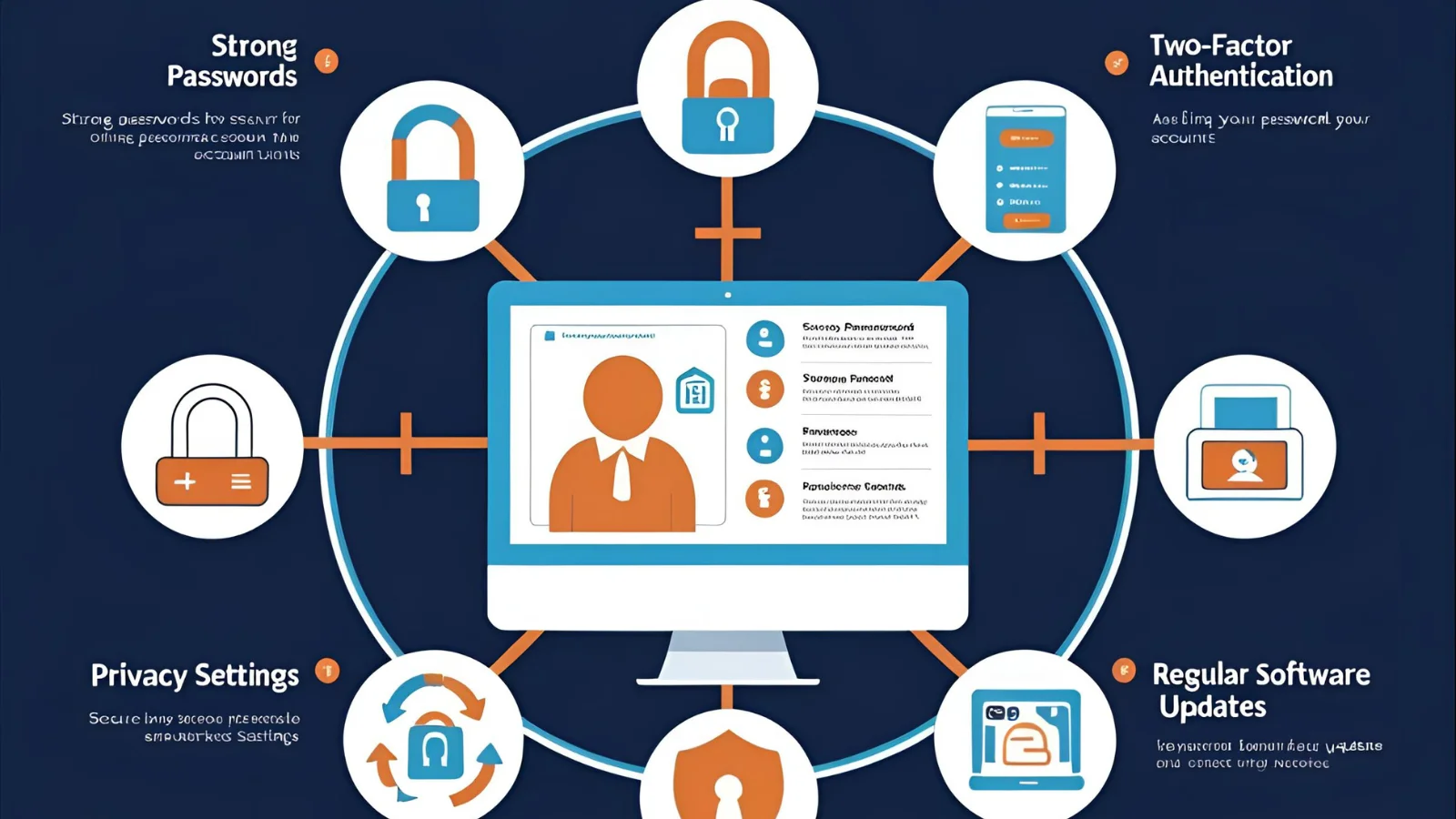 Once you’ve successfully made the switch, here’s how to get the most out of your new account type:
Once you’ve successfully made the switch, here’s how to get the most out of your new account type:
1. Focus on Organic Growth
With a personal account, rely on genuine engagement. Use story replies, meaningful comments, and consistent posts to stay visible and grow naturally.
2. Track Performance Manually
Since you lose Instagram Insights, track your post performance using a simple spreadsheet or third-party tools like Socinator to stay informed.
3. Share Relatable Content
Personal accounts perform best when content is authentic and emotionally resonant. Share real-life moments and keep things casual and relatable.
4. Use Automation to Save Time
Even without built-in features, tools like Socinator can help you schedule posts, automate basic actions, and stay active with minimal effort.
5. Be Consistent
Stick to a regular posting schedule and maintain a cohesive visual style. Consistency builds familiarity and helps retain your audience.
6. Try Socinator with Your Account
Socinator supports all account types, including personal. It helps automate tasks and streamline your content strategy without needing business tools.
7. Grow with Intention
Without the pressure of analytics, focus on meaningful interactions and building a loyal, engaged following at your own pace.
These tips will keep your content strategy strong even after learning how to switch to a personal account on Instagram.
Final Thoughts
Knowing how to switch to a personal account on Instagram gives you the power to reclaim your digital space. Whether you’re reducing distractions, avoiding overexposure, or simply returning to your roots on the app, this change is easy, fast, and reversible.
With tools like Socinator at your side, even a personal account can achieve professional results. From content automation to targeted engagement, Socinator supports you every step of the way, even if you’re no longer using a business account.
And if you’re ever wondering again how do I switch to a personal account on Instagram, just come back to this guide. Whether you’re upgrading, downgrading, or simply experimenting, Instagram is flexible. So use it your way.
FAQ
Q1: Can I switch from a business account to a personal account without losing followers?
Ans – Yes, switching to a personal account won’t impact your followers, existing posts, or direct messages. All your content remains intact; only the account features change.
Q2: Will switching to a personal account affect my account’s visibility or reach?
Ans – Possibly. Without access to promotions or insights, your organic reach may fluctuate slightly, especially if your account previously relied on ads or analytics-based content strategy.
Q3: Is there a limit to how many times I can switch between account types on Instagram?
Ans – No, Instagram doesn’t impose any restrictions on switching account types. You’re free to change from personal to business or creator accounts and back again anytime.
Q4: Can I still use Socinator if I have a personal Instagram account?
Ans – Absolutely. Socinator fully supports personal, creator, and business accounts. It lets you schedule posts, auto-engage, and manage activity without needing a professional account setup.
Q5: What if I want to switch back to a business or creator account later on?
Ans – You can return to a business or creator account at any time by revisiting your account settings. The switch is simple, reversible, and doesn’t delete your content or history.

